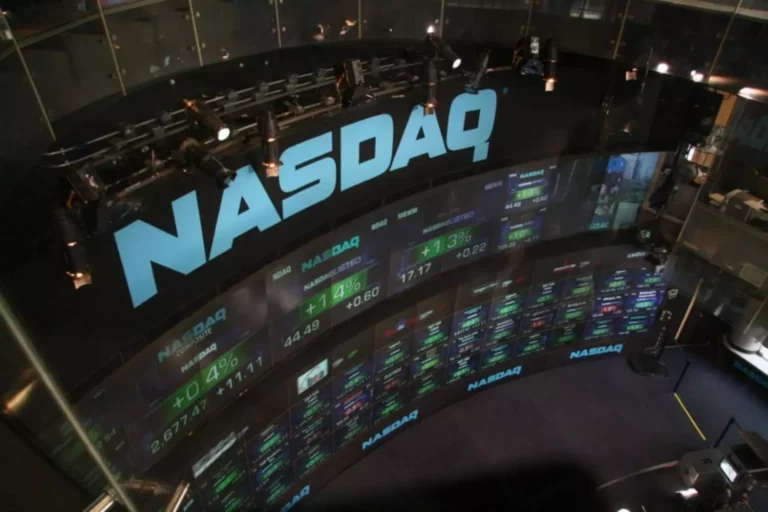Trading consolidated between two lines that edged ever closer to each other, but shortly before the lines met the index broke below support and began a bear run. Not all wedges will end in a breakout – so you’ll want to confirm the move before opening your position. Paying attention to volume figures is really important at this stage. The continuous trend of a decreasing volume is significant as it tells us that the buyers, who are still in control despite the pull back, are not investing much resources yet.
At least 2 reaction highs are needed to form the upper resistance line. A good upside target would be the height of the wedge formation. They pushed the price down to break the trend line, indicating that a downtrend may be in the cards.
Can the Falling Wedge Be a Bullish Pattern?
A breakout occurs when the price of an asset moves above a resistance area, or below a support area. The difference between wedges and ascending/descinding triangles, simply is that the latter has one line which is parallel. In contrast, the wedge pattern has both it’s line either falling or rising.

In both scenarios, as the stock then reaches support and begins to consolidate, volume will typically decrease, forming a tight trading range. This decrease in volume suggests that the stock has reached a state of indecision, as buyers and sellers are in balance and the stock is consolidating. The falling wedge pattern is characterized by a chart pattern which forms when the market makes lower lows and lower highs with a contracting range. When this pattern is found in a downward trend, it is considered a reversal pattern, as the contraction of the range indicates the downtrend is losing steam. Together with the rising wedge formation, these two create a powerful pattern that signals a change in the trend direction. In general, a falling wedge pattern is considered to be a reversal pattern, although there are examples when it facilitates a continuation of the same trend.
Adding distance to the breakout level
A sound trading strategy would also require you to determine the right entry and exit points in your trade. If coupled with other indicators and used the right way, it can bring massive profits especially if you’re in the crypto market where gains are orders of magnitude higher than others. The triple top is a bearish signal that appears after the price action consolidates falling wedge pattern meaning and creates three similar highs. It should show the price momentum upwards getting rejected thrice on the same resistance level. When this pattern completes itself, it breaks down from the support line right after the third peak. When analyzing volume in relation to a falling wedge pattern, it is important to look for an increase in volume upon the breakout.
- As a result, some starts to sell and take profits, which pushes the price lower.
- Another common signal of a wedge that’s close to breakout is falling volume as the market consolidates.
- One question that is usually asked by many, is how the falling wedge differs from the triangle pattern.
- To identify a bullish pennant, you’ll need to watch for two elements.
- Once you have mastered the patterns involved, you should be able to incorporate them into your trading strategy.
To design your wedge trading strategy, you’ll need to decide when to open your position, when to take profit and when to cut your losses. To qualify as a reversal pattern, a Falling Wedge should ideally form after an extended downtrend that’s at least three months old. The Falling Wedge pattern itself can form over a three to six-month period. Trade up today – join thousands of traders who choose a mobile-first broker. If you are a new trader, we recommend that you spend a lot of time learning and applying them in a demo account. The wedge pattern is a popular pattern to use when trading the financial market.
What is a Falling Wedge Pattern?
The key to identifying a falling wedge is to look for a support level that the price action bounces off of repeatedly. Once you have identified a falling wedge, you can use a number of different indicators to detect whether it is bullish or bearish. It is created when the price action forms a series of lower highs and lower lows. It is bullish if it forms in an uptrend and bearish if it forms in a downtrend. Falling wedge pattern is a reversal chart pattern that changes bearish trend into bullish trend.
In the context of a reversal pattern, it suggests an upcoming reversal of a preceding downtrend, marking the final low. As a continuation pattern, it slopes down against the prevailing uptrend, implying that the uptrend will continue after a brief period of consolidation or pullback. There are two types of wedge patterns, which include falling and rising wedge. Market psychology plays an essential role in these patterns as large-scale investors and retail traders often depend on an asset’s price history in order to strategize their next move. This creates certain patterns to appear in charts if enough people participate in a particular market. This is also why TA results are reliable reference points whenever strategizing trades.
How to Identify a Falling Wedge Pattern
When a stock is in a downtrend or a consolidation phase, traders watch for lower highs and lower lows being formed. The most common falling wedge formation occurs in a clean uptrend. The price action trades higher, however the buyers lose the momentum at one point and the bears take temporary control over the price action. The second phase is when the consolidation phase starts, which takes the price action lower. It’s important to note a difference between a descending channel and falling wedge. In a channel, the price action creates a series of the lower highs and lower lows while in the descending wedge we have the lower highs as well but the lows are printed at higher prices.

Deepen your knowledge of technical analysis indicators and hone your skills as a trader. First, the price of an asset needs to be in a strong upward trend. Moreover, drawing support and resistance lines are also crucial in reading patterns. Falling wedges are some of the most popular trading pattern around, and when used in the right manner, they can pinpoint great trading opportunities in the markets.
What Are Falling Wedge Patterns?
Many traders prefer that the volume is decreasing as the pattern forms and the market goes further and further into the wedge. The second is that the range of a previous channel can indicate the size of a subsequent move. In this case, it’s often the gap between the high and low of the wedge at its outset. If a rising wedge begins with support and resistance 100 points apart, the market may then fall 100 points once the breakout is confirmed. A wedge pattern is a triangular continuation pattern that forms in all assets such as currencies, commodities, and stocks. Unlike other candlestick patterns, the wedge forms within a longer period of time, between hours and days.
For this reason, we have two trend lines that are not running in parallel. Therefore, rising wedge patterns indicate the more likely potential of falling prices after a breakout of the lower trend line. Traders can make bearish trades after the breakout by selling the security short or using derivatives such as futures or options, depending on the security being charted. These trades would seek to profit on the potential that prices will fall. A wedge chart pattern is among the most widely occurring chart patterns.
Plan your trading
The profit target is measured by taking the height of the back of the wedge and by extending that distance up from the trend line breakout. The third point is seen more as a boost to the validity and effectiveness of the pattern, rather than a mandatory element. The decreasing volume suggests that the sellers are consolidating their energy before they start pushing the price action lower towards the breakout. You need to do TA in order to predict an asset’s possible next move, which requires knowing how to recognize certain classic chart patterns as soon as they’re printed. As stated earlier, there are bullish and bearish chart patterns that you can use to increase the likelihood of making accurate calls. To learn more about chart patterns and how to trade them, visit our education section by clicking HERE.
It all depends on the timeframe and market you trade, and how it resonates with the pattern. In the image below you see how we have added some distance to the breakout level. Being so ubiquitous, false breakouts can be incredibly expensive if not dealt with correctly. In just a bit we’re going to look closer at what you may do to prevent acting on false breakouts.
What is a Rising Wedge?
The second is to use the general rule of thumb that markets will often revert briefly before a full breakout begins. In these cases, the previous support https://www.xcritical.com/ turns into resistance – and resistance into support. Say, for example, that EUR/USD enters into a bullish wedge and breaks its resistance line at $1.084.
Leave a Reply